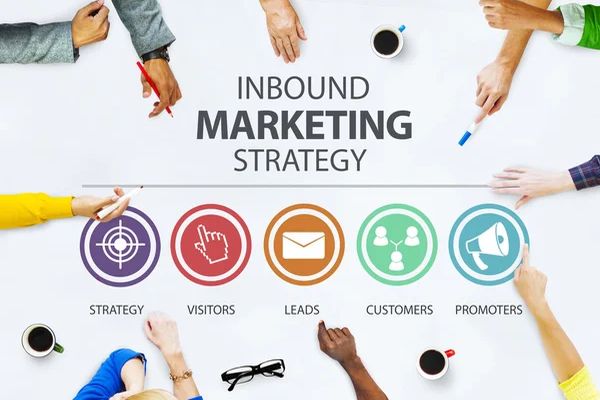
Every business needs to do some form of marketing. But what type of marketing is the most effective? Most conventional marketing approaches are too expensive or unwieldy for companies and startups to successfully employ. That’s why inbound marketing and its various techniques make sense for any business, but especially for startups and smaller businesses.
Inbound marketing is more of an approach than a list of tactics. Inbound marketing, at its core, is about attracting prospects to your business rather than going out to find those prospects. Traditional marketing relied on email lists, cold calls, billboard ads, and direct mail.
Here are the six inbound marketing techniques I’ve used with surprising success in my startups, and that you can use to grow your business.
If you’ve ever seen any of the resources like these that I’ve created, you’ll know that I’m a big believer in creating advanced guides.
Each of my guides is thousands of words long, making them a great source of organic traffic. I didn’t post them just to get words out. I posted them to provide sellers with solid information. Many marketers I know use this technique to build their email lists, such as AudienceBloom who published the Ultimate Guide to Marketing Your Business Online.
What is Inbound Marketing examples?

Inbound marketing: what it is, definition and examples. We know that every company needs customers to survive the market and must always bring its own brand and products to the public.
Advertisers in the history of advertising have continually wondered what was the best way to reach the pre-established objective and convince them above all to purchase a product and they have devised many and we know many advertising methods made to achieve this.
This communicative mode is called outbound marketing, that is, outbound marketing and focuses on a message addressed only to the customer, therefore, from the company to the target audience, to the consumer.
Many theories have been formulated and are the historical theories regarding the world of advertising.
But the digital market today proposes a new way that is called inbound marketing, that is, inbound marketing, which consists precisely of a strategic plan that aims to be a corporate objective, that is, that potential customers find customers.
If traditional advertising was from the business to the consumer, inbound marketing is from the consumer, from the customer, to the business. Thus, the report is reversed: while outbound marketing was tasked with pushing the product to the public, through the various advertising channels available, inbound marketing creates awareness. Therefore, it attracts, helps customers to get closer to the brand, so that the brand is obviously fascinating.
What is inbound marketing and what are its stages?
The inbound marketing methodology is based on a series of non-intrusive techniques that help brands to:
- Attract visitors and traffic to your websites;
- Push these visitors to become potential customers, or the contacts potentially interested in converting and those who can establish a long-term relationship instead;
- Automate the marketing process so conversions take less than expected.
As a fundamental characteristic of this methodology, it is necessary to emphasize that non-invasive techniques have always been used: it is simply inviting the client to come to us instead of exploding in their daily life with aggressive advertising.
Inbound marketing combines the various aspects of digital marketing and harmonizes them into a single goal that satisfies the strategy. He places a high value on creating and sharing content designed specifically for the target customer to attract them to his brand.
Think about the various aspects of digital marketing: social media, SEO, content marketing, pay per click, and others. Often these channels are managed in silos with different metrics, by different teams, and with different budgets.
Inbound marketing draws these tactics together with unified goals, with each channel doing its job as part of a larger effort. You can think of it like a soccer team where each player has a specific focus, but together they work for a single goal: to win the game.
How to create an Inbound Marketing strategy?

People who live and breathe inbound marketing are all too familiar with the complexities involved in formulating a fully-fledged inbound marketing strategy.
Inbound marketing demands that you be more than a Jack-of-All-Trades tinker. Instead, you need to be a pro in dozens of specific skills: content writing, search engine optimization, social media, website design, conversion rate optimization, pay per click, email marketing, the list goes on.
As a result, when we help marketers with an inbound marketing strategy, the conversation often evolves into a discussion of creating a marketing plan: how to prioritize, what to do, what not to do, what works best for business models, and what to do. specific businesses and how to implement the right infrastructure to facilitate inbound lead generation. Whether you’re launching a new startup company or looking for quick ways to revamp your business marketing activities, a solid plan can make the difference between treading water and achieving exponential growth.
Following this guide will help you put together the right inbound marketing plan for your organization, prioritize every aspect of your strategy, and focus on what drives the best results. In a world of instant gratification, there isn’t a lot of time to plan, so this guide is designed to help you hit the ground running.
Buyers are the foundation of all things inbound marketing. Understanding exactly who you’re marketing to, what makes them tick, and how they communicate will help you create messages that really resonate with your ideal customers.
How to create an inbound marketing strategy step by step?
Are you new to inbound or do you think your current campaigns could use some direction? Over At Overgo we have created a pretty foolproof and perfect process for creating a marketing strategy. It’s really quite simple, all you need to do is set the goals, create the basics, automate the processes and analyze the results. Let’s go deeper!
The first step in creating an inbound marketing strategy is to define your business goals. Based on where you are and where you want to go, it’s important to create a road map of how to get there. Along this path, you can define KPIs that tell you how your inbound marketing campaign is doing. You can look at your competitors, your industry market, and where you are in that market to create realistic and achievable goals.
The first step in setting direction is to set personalized goals during a discovery session. Holding a meeting with you and your team to identify your ideal clients is the best way to go. In this meeting, you can discuss your key metrics, revenue goals, and your sales process to produce the best custom strategy.
A deeper understanding of your audience provides direction for the content you create and keeps your visitors coming back for more. You can create a research-based representation of who your buyers are, what they want to achieve, the pain points that shape their behavior, and how they make buying decisions.
Understanding your competitors and what other companies are doing in your industry is ideal. You can identify your specialty and see where the holes are in your industry that could be filled.
How to create an inbound marketing campaign?
Years ago, running a marketing campaign meant developing creativity, writing a check, and crossing your fingers that the results would follow. Today, the channels marketers use are different, but many of the same issues remain: disconnected tools and channels mean it’s hard to measure results, and the experience for your prospects often feels disconnected.
That’s where inbound marketing comes in. Unlike traditional marketing campaigns, inbound marketing campaigns are designed around one goal, across a variety of connected channels.
So whether you’re planning your marketing strategy as a whole or developing a specific marketing campaign to achieve a particular goal, we’ve put together a little plan to cut a daunting task down to a manageable one.
Inbound Marketing is the idea of creating valuable content for your audience, and an inbound marketing campaign can include blog posts, social media posts, and videos. The goal is to attract customers who are interested in what you have to offer and then convert them into paying customers.
We ask for your information in exchange for a valuable resource to (a) improve your browsing experience by customizing the Hubspot site to your needs; (b) send you information that we think may be of interest to you by email or other means; (c) Send you marketing communications that we believe may be of value to you. You can read more about our privacy policy here.